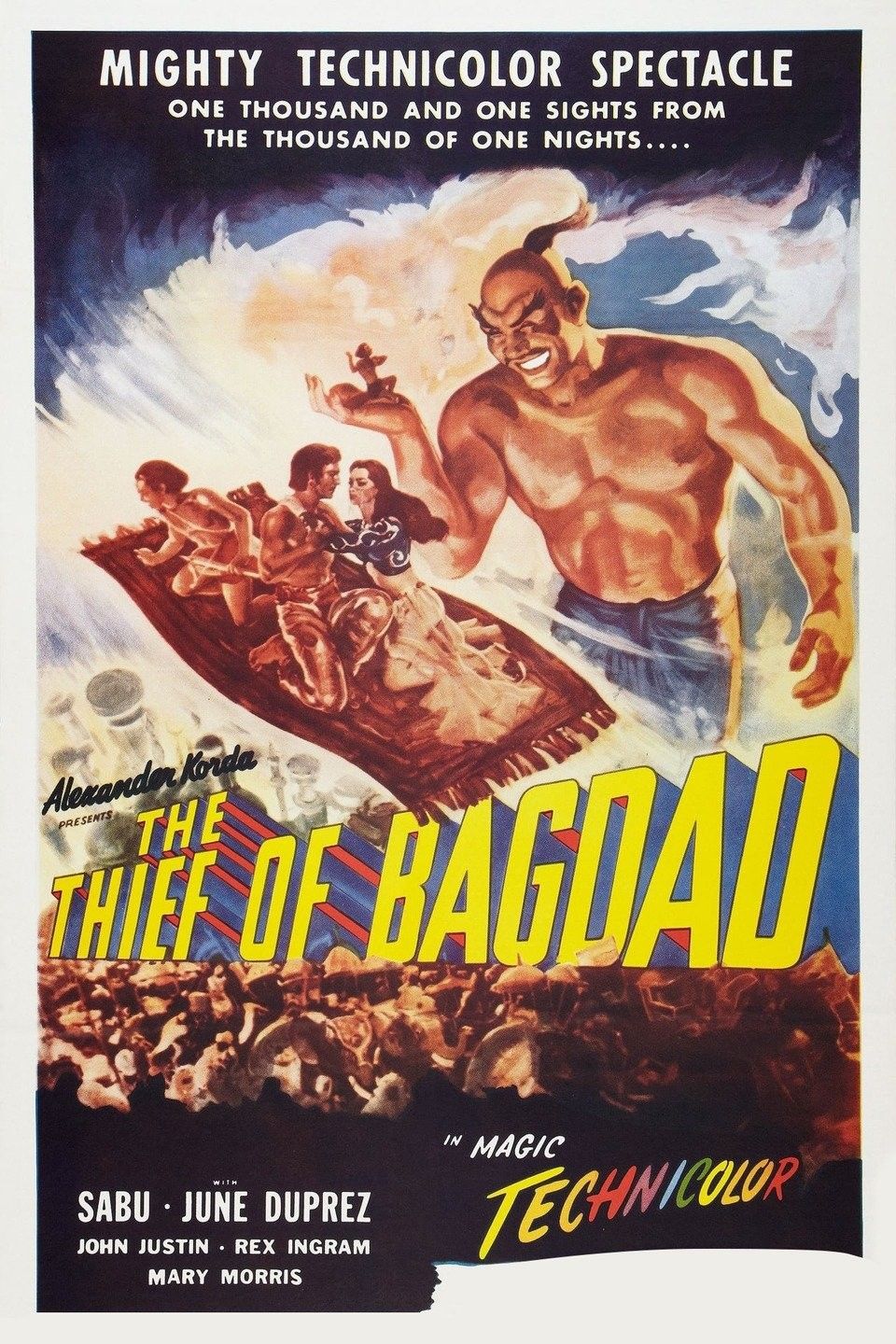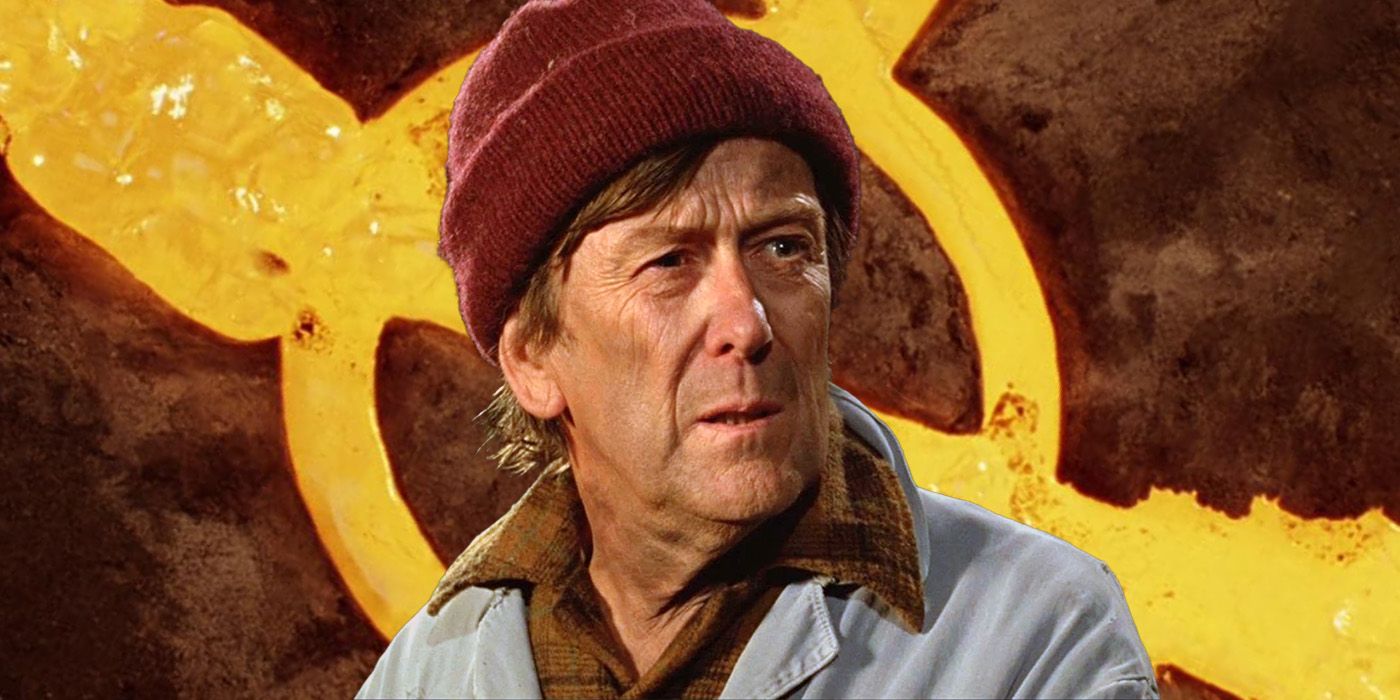The Big Picture
- Scorsese credits Michael Powell’s film,
The Thief of Bagdad
, as a pivotal moment in sparking his love for filmmaking. - The film’s innovative special effects, including blue screen technology, set it apart as an extravagant spectacle in 1940.
- Scorsese admires Powell’s storytelling elements of vision and blindness, honesty, and visual playfulness in his work.
As the android David (Michael Fassbender) once said in Prometheus, “big things have small beginnings.” Martin Scorsese would most definitely qualify as a “big thing,” being one of the defining filmmakers of the 20th century, whose hold on cinema culture is still felt to this day. For a noted cinema encyclopedia like him, his small beginning was watching television in 1947, when he saw a film called The Thief of Bagdad. It was a fantastical film that not only captivated little Marty, it helped ingrain in him his life-long fascination with director Michael Powell, who would become a deeply influential person in his career. Looking back as an adult, Scorsese would attribute Powell’s specific direction in The Thief of Bagdad as a watershed moment in making him fall in love with films, and the film stands as a seminal example of sheer storytelling craft.

The Thief of Bagdad
In this fantasy adventure, a young thief joins forces with a deposed king to reclaim his throne and rescue a princess from an evil sorcerer. Along the way, they encounter magical creatures, flying carpets, and enchanted objects, all while battling the sorcerer’s dark powers.
- Release Date
- December 25, 1940
- Director
- Tim Whelan , Ludwig Berger , Michael Powell
- Cast
- Conrad Veidt , Sabu , June Duprez , John Justin , Rex Ingram , Miles Malleson , Morton Selten , Mary Morris
- Runtime
- 107 Minutes
- Writers
- Miles Malleson , Miklós Rózsa
What Is Michael Powell’s ‘The Thief of Bagdad’ About?
The Thief of Bagdad is essentially a version of the Arabian Nights tale of Aladdin long before Disney made some major changes with their iconic version starring Robin Williams. Ahmad (John Justin) is a blind beggar on the streets of Basra, who gets money by performing tricks and asking people for spare change. When he is taken in by some kind women, he regales them with his tale of how he was once the revered King of Bagdad. But when his secretly evil second-in-command, Jaffar (Conrad Veidt), tricks him into being arrested and thrown in prison, Ahmad teams up with a cunning thief named Abu (Sabu) in prison, and they break out to get Ahmad’s throne back and overthrow Jaffar. Along the way, Ahmad will fall for the beautiful Princess (June Duprez) of Bagdad, who Jaffar is scheming after for his own lust. Ahmad’s and Abu’s combined efforts to save the Princess and stop Jaffar serve as an excuse for a series of setpieces that are frankly awe-inspiring in their ingenuity from a special effects perspective. The film around the setpieces is still very well-acted and well-paced for what it’s trying to do, but it really soars when it fully dives into an eye-popping spectacle that had to have been mind-blowing for a 1940 audience.
The Special Effects of ‘The Thief of Bagdad’ Are Staggering
A majority of those popped eyes came courtesy of an innovation that The Thief of Bagdad can claim to be responsible for: blue-screen technology. As reported by the Huffington Post, “by using three separate strips of film (one each for red, green, and blue), [special effects artist Larry Butler] could arrange the original negative and newly printed positive strips so that the blue negative and green positive strips would create a solid matte. This would be composited with new footage shot against a blue screen.” Once that was done, images could be (mostly) seamlessly put on top of each other in a way that would allow figures to do things impossible to capture in real life.
Many of the film’s biggest “wow” moments come from this process, though sometimes it can be hard to look past the thick blue lines around the characters and how faded they look compared to the background footage. That said, there’s no shortage of inspired ideas brought to thrilling life, ranging from a flying horse, a flying carpet, tiny dancers frolicking in a music box, and a mountain-sized Djinni (Rex Ingram) who proves vital to Ahmad’s and Abu’s quest. Coming just a year after The Wizard of Oz, a similarly fantastical production that didn’t use any compositing at all, it’s a huge leap forward in filmmaking technology that makes The Thief of Bagdad feel much more bombastic in its grandeur, and contributes towards the film’s goal of being a pulse-pounding extravaganza.

Related
This Unique Fantasy Movie Flips the Time Travel Genre on Its Head
Vincent Ward’s underrated feature gives us a new way to time travel.
The grandeur would have been blown too far out of proportion were it not for the film’s mixing of more in-camera practical effects. The cityscapes of Bagdad and Basra are filmed from a forced perspective against matte painted skies that make them feel vast, especially when we’re treated to shots of huge crowds roving throughout the streets. Abu’s encounters with the Djinni are enhanced by huge models of the Djinni’s foot almost crushing him and a giant ear and shoulder for Abu to stand on when they go flying in the air. Abu gets to have a big fight with a huge spider that’s clearly a life-size model, while he’s also clambering up real-looking spiderwebs, and that makes Abu’s struggle all the more rewarding. Even the practical effects that are very noticeable now, like the strings holding up the flying carpet and the bald cap that Ingram wears for the role, add to the make-believe charm and utter sincerity of the production. That sincerity is carried over to the cast, with Justin and Sabu sharing a buoyant energy between the two of them that verges on bromance, while Veidt and Ingram steal the show with their ultra-pyrotechnical displays of wanton villainy and uproarious elation, respectively. That combination of male camaraderie, intensely plausible action scenes, and aspirational storytelling all connected with Scorsese, and you can see those traits in the films he’s made throughout his career. More specifically, it’s the artistic imprint that the celebrated Michael Powell left on the film that Scorsese really latched onto.
Why Does Martin Scorsese Like Michael Powell’s Work So Much?
Listening to Martin Scorsese’s commentary on the Criterion Collection DVD edition of The Thief of Bagdad is an insightful window into how much of an imprint seeing the film as a child left on him as an adult artist. While acknowledging the contribution of four other directors in service of the film’s architect, super producer Alexander Korda, Scorsese’s thoughts routinely go back to the work of Michael Powell, the legendary director behind films like A Matter of Life and Death and The Red Shoes. Scorsese theorizes that the primary reason he loves the film so much is the way Powell’s direction fixates on the story’s elements of vision and blindness, its child-like and irony-free sensibilities, and its mixing of studio-based craft with Powell’s documentary-influenced movement inside the frame.
Scorsese admires Powell’s sense of visual playfulness in the compositions as well. He makes note of how Powell’s previous experience making documentary films in Burma influenced his comfort in depicting the cultural locations, and he emphasizes how Powell’s editing captures the emotion of the scene in a way that Scorsese claims has influenced how he edits all of his films. He believes it all combines to give the film a pictorial magic that perfectly enhances its fairy tale purity. Scorsese even drops a tidbit about how he’s not alone in his love for the film, as his famous friends Francis Ford Coppola, George Lucas, and Steven Spielberg all talked with each other about how much they all loved the film as kids.
As it pertains to Scorsese’s future career, you can’t claim that The Thief of Bagdad served as too much of an overt influence on his films, as he never really dabbled in the fantasy or fairy tale world. But it’s in the film’s sumptuous visual display, it’s unadorned emotional honesty, and its celebration of masculine solidarity that lit a fire in Martin Scorsese’s mind to fall into the rabbit hole of cinema. It also primed him for a lifelong affiliation with Michael Powell, who he would later get to know and be mentored by in his film career. With Powell being married to Scorsese’s longtime editor, the great Thelma Schoonmaker, he was often around for Marty to turn to for advice on his films. Powell became a North star for Scorsese, guiding him towards being the filmmaker he was destined to become, and Scorsese has always been open about how indebted he is to Powell for that molding. Without The Thief of Bagdad, Scorsese would never have been able to have all of his biggest wishes come to life on the big screen.
The Thief of Bagdad is available to watch on Max in the U.S.










